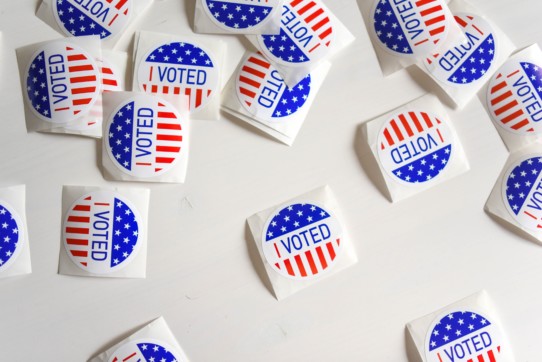How Social Good Organizations Can Boost Voter Engagement in the U.S.

The election is getting close and a whopping 40 million Americans have already voted early in person or by a mail. That puts us far ahead of this time during the last presidential election but we shouldn’t get comfortable yet – in 2016 nearly 100 million eligible voters didn’t make their voice heard at the ballot box. Our democracy works best when everyone participates, and as nonprofits and social good organizations, it’s up to us to make sure our communities are engaged and voting.
Why nonprofit and social good organizations?
We have access and trust among less likely voters that campaigns can’t compare with. We’re serving our communities year-round, sometimes for decades, and have built our reputations as trusted messengers and caring professionals. We work with communities of color, low-income families, young people, people with disabilities, and those who are limited English proficient. These are the same communities that face long standing gaps in voter participation. We’re also effective. Nonprofit VOTE’s study of voters engaged by nonprofits ahead of the 2018 election showed that not only were the engaged voters about twice as likely to be non-white, lower income, and younger than 25, the “nonprofit voters” turned out at rates 11 percentage points higher than voters that shared their demographic characteristics. Among the organizations participating were food pantries, community health centers, family resource centers, housing coalitions, and other service organizations across seven states.
It’s good for us, too. Not only can this be a fun process for your staff and colleagues, but political candidates take notice when nonprofits engage. The voters you help to turnout will elect leaders that care about the issues you work on. As a nonprofit leader who participated in the study said, “The only way we can have communities do better is if we educate them about the responsibility and power of voting. Then they can control the people they elect, and put resources back in their community.”
Staying nonpartisan
Any nonprofit interested in promoting voting should brush up on the basics of nonpartisanship. This brief guide on what nonprofits can do during election season is a nice primer, but there are some basic principles that I always come back to. First, it’s always okay to share information about the election process: how to register or apply for a mail ballot, when polling places are open, which races will appear on the ballot. Second, when possible, avoid discussing candidates or campaigns. You can still talk about issues – and connecting issues of concern to your community with voting is a great Get Out the Vote strategy – though you should be mindful of messages around issues that divide candidates and whether it implies support of one candidate or another because of the third rule: Never endorse or oppose a candidate or party. As tax-exempt organizations, our role is to promote turnout, not to influence the outcome of the election.
What can you do between now and November 3rd?
Now that we understand our potential impact and the rules of engagement, let’s think about the resources and opportunities available at your organization. Do you have staff who can translate for non-English speakers? A fired up bunch of volunteers willing to send texts or make calls to your client list? An upcoming event where you will have the opportunity to talk to lots of people? Get creative when thinking about who to team up with and where to spread the voting message.
Here are a few ideas that organizations are having success with:
- Make voting a visible part of your online presence: Pin voting reminders and helpful links to the top of your social media pages, website, and newsletters. Add a link to your state’s voter portal to your organization’s intranet for employees. Encourage staff who are in touch with clients or volunteers over email to include a link in their signature.
- Triple your vote: Get staff involved in contacting people in their networks. They can make outreach personal by sharing their own voting plans – like whether they plan to vote in person or by mail, when will they cast their ballot, and whether they need transportation- and helping others form their own. People who aren’t eligible to vote, like those under 18 or non-citizens, can make appeals to the voters in their lives.
- Share nonpartisan candidate information: There’s more than just a presidential race appearing on most ballots this year. Encourage people to use Vote411 to read up on candidates and ballot measures. If you can get a group of people to review this together over zoom you’ve got yourself a ballot information party!
- Be a poll cheerleader: If you are located somewhere with long lines at the polls you can keep morale up by cheering on voters, passing out food, hand warmers, or water, and sharing the election protection hotline (866-OUR-VOTE) with anyone facing issues at the polls. Just make sure to stay 100 feet from the entrance and avoid any partisan activity.
Keep calm and carry on: We may not know the results for a few days after the election. There may be news stories about legal battles contesting ballots. But unless there’s an actionable item, keep the focus on the fact that our country was literally built for this! There may be some irregularities at the polls but so far 2020 is shaping up to be the most secure election is US history.
Good luck, and happy voting.
